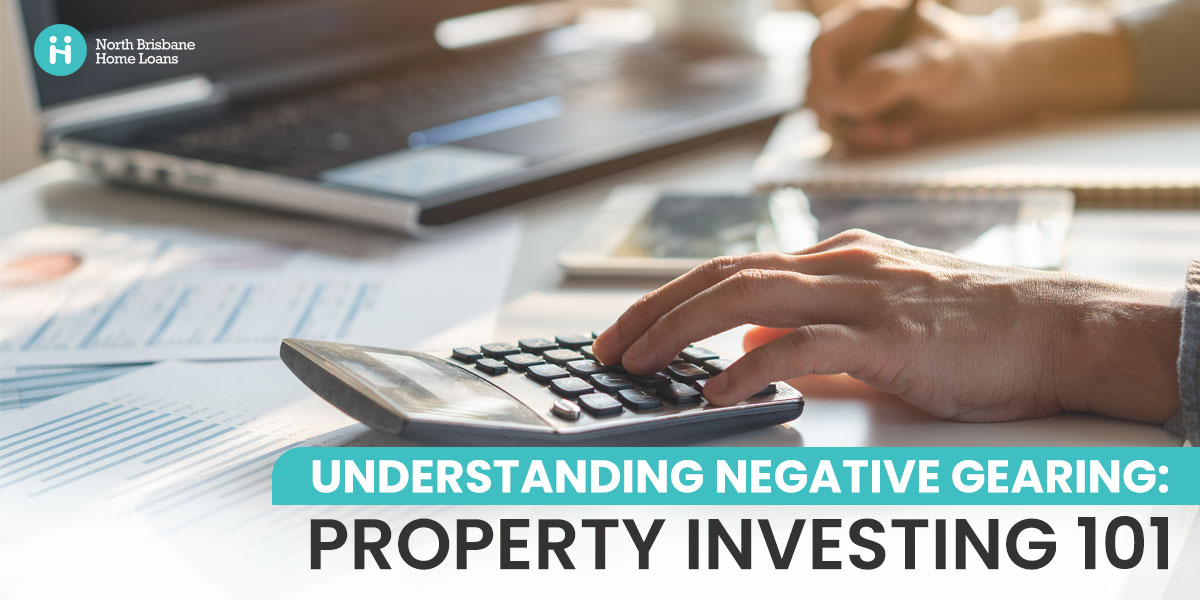Understanding Negative Gearing: Property Investing 101
Investing in property can be a fantastic way to build wealth over time, however, negative gearing is a crucial concept to understand. A question many first-time property investors ask is: “If the rental income of the property doesn’t quite cover all of the expenses, what are my options?” We have compiled this blog to help you understand what negative gearing is and how it might apply to your property investment strategy.
At North Brisbane Home Loans, our trusted mortgage brokers can assist you with finance and local knowledge. So, read on to learn about negative gearing, and then have a chat with us to see how we can help you get into the investment property market.
What is Negative Gearing?
Negative gearing is a perfectly legal strategy to manage investment properties in Australia where the rental income from the property is lower than the expenses associated with owning it.
The expenses included in owning an investment property can include:
- Loan interest
- Council rates
- Water rates
- Body corporate fees (as applicable for certain types of dwellings like apartments or townhouses)
- Land tax
- Depreciation (wear and tear on the property)
- Repairs and maintenance
If the amount you charge for rent does not cover these listed expenses, this is where negative gearing can be used to access tax benefits. While this might not seem so smart on the surface, it can balance out at tax time if managed correctly. Keep reading to find out how.

Negative Gearing Explained
The advantage of negative gearing is that the investment property management expenses are tax-deductible. This means you can subtract them from your taxable income, potentially reducing your overall tax bill.
For example, let’s say you purchase an investment property valued at $860,000 with a monthly mortgage repayment of $4,625 (which equates to $55,500 annually). Let’s also assume the weekly rent on the property is $685, generating $35,820 in rental income per year. In this scenario, you would have a net loss of $19,680 on the property itself ($55,500 in expenses – $35,820 in rent). However, since the $55,500 in expenses are tax-deductible, you can offset that loss against your other income, potentially lowering your taxable income by $19,680.
How Does Negative Gearing Work?
While negative gearing can be a beneficial investment management strategy and a powerful tool for reducing your taxable income, it is important to understand how it works before diving in. Here are some key things to consider:
- Long-term strategy: Negative gearing is best viewed as a long-term strategy. The tax benefits can help offset the initial financial losses, but the goal is for the property value to appreciate over time. When you eventually sell the property, you may make a capital gain, which can further benefit your financial situation.
- Not for everyone: Negative gearing isn’t suitable for everyone. It requires a good understanding of the property market and a tolerance for some financial risk. It’s crucial to seek professional financial advice to ensure negative gearing aligns with your individual circumstances and financial goals.
- Costs to consider: Remember, negative gearing doesn’t eliminate expenses. You’ll still be responsible for mortgage repayments, vacancy periods and ongoing maintenance costs as part of managing your investment property throughout the year.
Looking Beyond the Basics of Negative Gearing
Now that you understand how negative gearing works, it’s worth stepping back and looking at the bigger picture. While the strategy can be effective for many property investors, there are broader economic, social and political factors that can influence whether negative gearing continues to deliver the benefits you expect. By being aware of these, you’ll be better positioned to make informed and resilient investment choices.
Negative Gearing and The Bigger Picture
When discussing negative gearing, it’s important to look beyond the immediate tax benefits and consider how this strategy fits into the broader economic and property investment landscape. Negative gearing doesn’t just influence individual investors – it also plays a role in housing affordability, government policy and the overall demand in the property market.
By understanding the bigger picture, first-time and seasoned investors alike can make more informed decisions about whether negative gearing truly aligns with their long-term financial goals.
Tax and Budget Impact of Negative Gearing
Negative gearing isn’t just an individual strategy — it’s a significant part of Australia’s tax landscape. Each year, billions of dollars in deductions are claimed by investors offsetting their property losses against their income. This reduces overall tax revenue and has become one of the largest property-related tax concessions in the country.
For investors, this is an important reminder: while negative gearing can improve cash flow through tax benefits, those benefits exist within a much bigger system. As governments seek ways to balance budgets, concessions like this often attract attention and debate.
The Debate Around Affordability
Another key consideration is housing affordability. Supporters of negative gearing argue that it encourages investment in rental properties. It helps to increase supply and give tenants more options. Critics, on the other hand, believe it fuels competition in the property market and drives prices higher, which makes it harder for first home buyers to enter.
Research also shows that the benefits are not distributed evenly. Higher income earners are more likely to make use of negative gearing and claim larger tax offsets. For everyday Australians, this can feel like an uneven playing field. This is why the policy is frequently discussed in the media and at election time.
Policy Shifts and Political Discussions
Because of these debates, negative gearing is often on the radar of political parties. Over the years there have been proposals to limit the strategy to newly built properties or cap it at one investment property per individual. While no such changes have been legislated, the fact that they are regularly raised shows that reforms remain a possibility.
This doesn’t mean investors should avoid negative gearing altogether. It does, however, highlight the need to stay informed. Policy changes can alter the advantages of a strategy, and being prepared allows you to adapt if and when reforms occur.
Negative Gearing and What It Means for Your Investment Strategy
So what should you do as an investor? First, keep a long-term focus. Negative gearing is most effective when it is part of a plan that eventually shifts to positive gearing as your property grows in value. Second, consider the type of property you invest in. New builds may be more favourably treated in future reforms, making them a strategic choice. Finally, seek professional advice – both financial and tax-related – so you can structure your investments in a way that remains strong even if the rules evolve.
North Brisbane Home Loans and Our Approach to Your Investment
Every investor’s circumstances are unique, and that’s why a personalised approach is so important. At North Brisbane Home Loans, we help you understand not only how strategies like negative gearing work today, but also how they may be influenced by tomorrow’s policy environment. If you’re looking to make the most of your investment journey, we’re here to guide you through the options and help you build a strategy that aligns with your goals.
North Brisbane Home Loans can help you navigate the complexities of property investment and negative gearing. Our expert mortgage brokers can discuss your financial situation and determine if negative gearing might be a good fit for your investment strategy. Book a chat with us today to see how we can help.
You can also use our online calculators to explore property repayment examples and property fees in your own time.

Patrick Cranshaw, a Certified Mortgage Professional for over 21 years, founded North Brisbane Home Loans in 2002. His career began with ANZ Bank in New Zealand, where he progressed over 16 years to a Business Banking role in Virginia. After moving to Brisbane in 2000, Patrick led the QLD market for a home loan agency, helped set up the REMAX Real Estate Finance division, and practiced as a broker.








